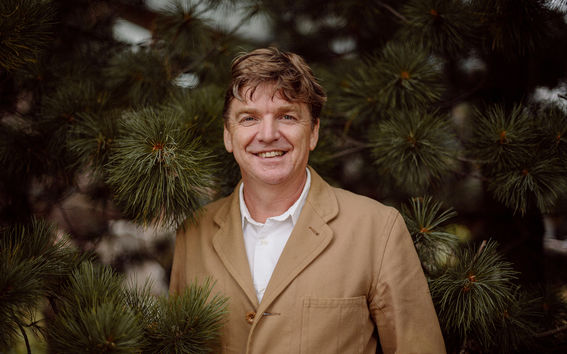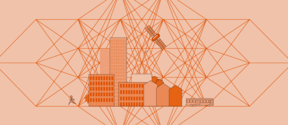'The younger generation really gets it'

Late last January, as snow blanketed Helsinki roared while landlords and the road commission scrambled to respond, Guy Julier took to Twitter to explain what he thought of earth movers pushing snow across a parking lot:
'While the planet burns, in Helsinki, Tonka toys pointlessly move snow from one place to another.'
Julier, it seems, is unafraid of taking a critical perspective. For over 30 years, his work has explored several less visible aspects of design since its phenomenal rise in the 1980s. He traces and uncovers how individals and groups 'design' their lives with material, spatial and visible objects, and how design interacts, creates and alters professions, economics, and consumption patterns.
Although the big story in economics in recent decades has been one of financialisation, deregulation and the new economy, Julier is confident that another, quieter development is underway in the economic realm. 'A great deal of variation has been unfolding,' he says. 'After the financial crisis in 2008, there has been the development of an alternative way of thinking on design and economics.'
Since taking up his post as Professor of Design Leadership at Aalto University in May 2018, Julier has been quite busy. Between teaching and completing a book project (Design Culture: Objects and Approaches, Bloomsbury 2019), he is holding the keynote address at this year's Design History conference this month and has been working on a project on social impact in design.
And on the side, he has also served as the commissioner of the Finnish pavilion at the XXII Triennale di Milano exhibition. Curated by Kaisu Savola and organised by the Aalto University School of Arts, Design and Architecture, the exhibition is called Everyday Experiments and marks the first time Finland has shown in Milan in nearly 30 years.
It takes design understanding to find sustainability
From the 1940s to the 1960s, the Milan Triennale brought Finnish furniture design and glassware into the international spotlight. This year's exhibition had a very different theme, focusing attention on the environmental crisis and the visible toll it has taken around the world, along with attempts to deal with the damage.
Looking back at the exhibition that has run since 1 March in Milan, Julier has mixed feelings. He says he is very proud of the Finnish pavilion itself and pleased with the way it differed from the 22 other national sections. 'Firstly, because it was visually and technically different than practically every other participation. It is a quiet exhibition, and required visitors to stop and reflect.'
'As commissioner of Everyday Experiments, I have had the opportunity to work with some truly amazing people. The team within Aalto - from Kaisu Savola to the exhibition desigers, graphic designers to the architects - have done incredible work on the project.' He also mentions the quality of the projects themselves, many of which he said were personally inspiring.
professor Guy Julier'There are uncritical assumptions of urban growth and indeed even economic as being necessary."
Yet Julier laments the lack of resonance in Finnish media, which he says is part of a larger problem with critical discourse and debate in Finland. 'There are uncritical assumptions of urban growth and indeed even economic as being necessary. Urban centres are being developed, and rural areas are dying out.' He insists that this development is explicitly connected to the topic of sustainability: 'You need sustainable communities in order to embed sustainable thinking in society. You need stability.'
Julier says that while the design industry in Finland is doing innovative, exciting work, there is a sense that much of the media and even some in the design field itself have an outdated sense of what design is and what it can do. 'Finland is sleepwalking at the moment with regard to many urgent issues,' he says, although he sees a generational shift among the younger generation of designers.
He hopes that the Finnish media, including the environmental correspondent at Helsingin Sanomat, will open up a dialogue on critical topics of this kind. 'At Aalto University, we've got the 7th best art and design school in the world, according to the QS rankings. And that's not because we design great chairs and tables. It is because we have a dynamic, critically engaged and intellectually relevant group of staff and students. We're going to keep banging on the door until we get the attention we deserve within Finland.'
***
From 1 March to 1 September, Finland presented Everyday Experiments at the XXII Triennale di Milano, featuring twelve experimental projects people are already doing to make their lives more sustainable and equitable. La Triennale di Milano was held from 1 March to 1 September 2019 and curated by Paola Antonelli, Senior Curator of Architecture and Design and Director of Research & Development at The Museum of Modern Art. Broken Nature reflected on the relationship between humans and environments at all scales—from the microbiome to the cosmos—including social, cultural, and natural ecosystems.
See all 12 Everyday Experiments: everdayexperiments.aalto.fi
Read more news

DeployAI Partners Gather for Heart Beat Meeting in Helsinki
The European DeployAI project's partners gathered for the Heart Beat meeting hosted by Aalto University Executive Education in Helsinki.
Get to know us: Associate Professor Maria Sammalkorpi
Sammalkorpi received her doctorate from Helsinki University of Technology 2004. After her defence, she has worked as a researcher at the Universities of Princeton, Yale and Aalto.
Aalto computer scientists in ICML 2024
Computer scientists in ICML 2024